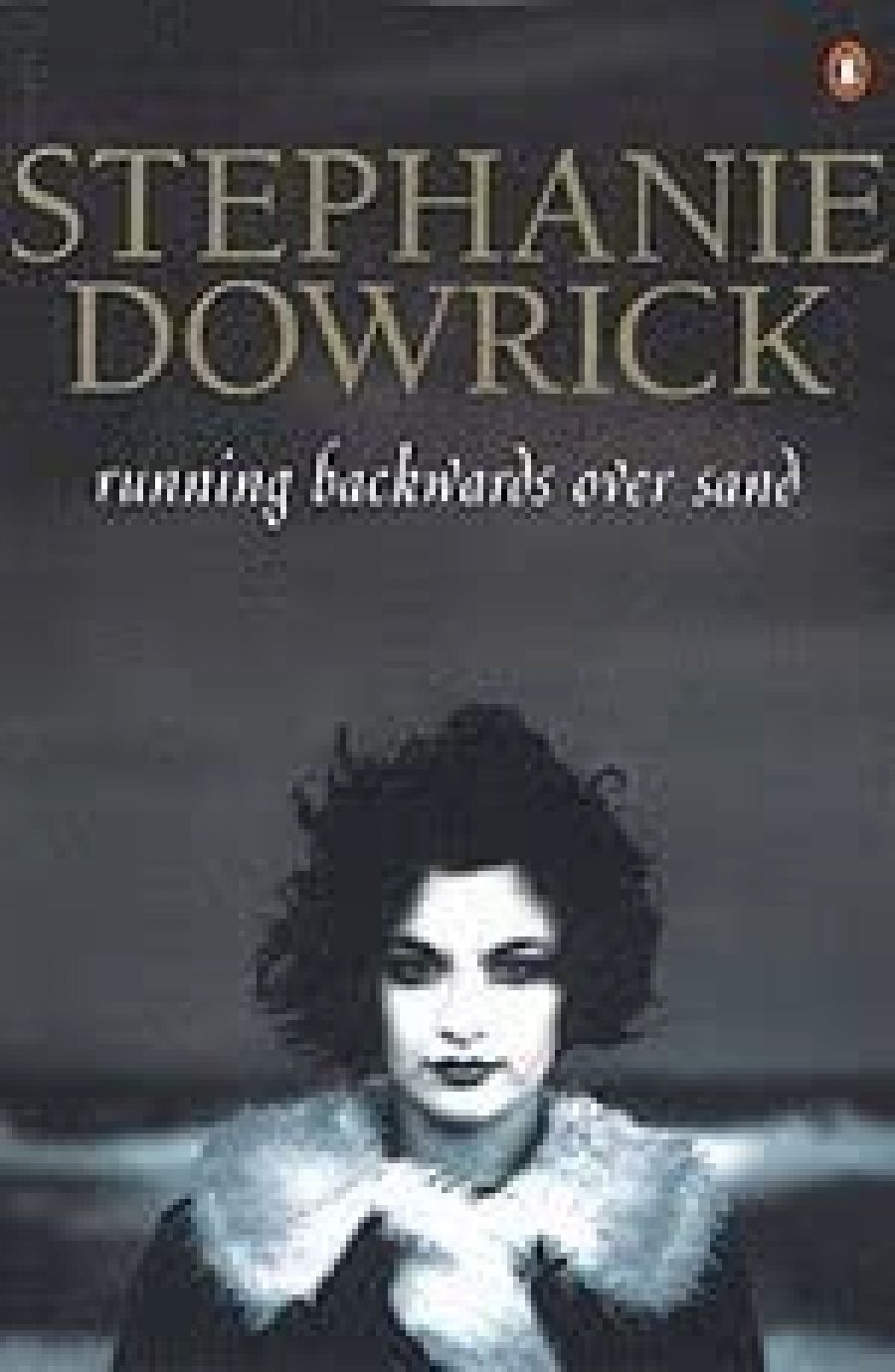
- Free Article: No
- Contents Category: Fiction
- Review Article: Yes
- Online Only: No
- Custom Highlight Text:
With her first novel (published in 1985 and now available in paperback), publisher and writer Stephanie Dowrick has created a long and uneven though often absorbing work, tracing the life of Zoë Delighty from birth to mature womanhood. It is a testament to the heroine’s survival of the vicissitudes of her active life, and her struggle to counter the malign influences of her girlhood which dog her through her attempts to engage herself creatively in life.
- Book 1 Title: Running Backwards Over Sand
- Book 1 Subtitle: Stephanie Dowrick
- Book 1 Biblio: Penguin, 349 pp, $6.95 pb
With these sections mark off important parts of Zoë’s life and career, to a large extent they also differ in the mode of writing. This separation is most clearly apparent in the differences between part one and the rest of the book. This part is undoubtedly the weakest, which unfortunately may deflect some readers before they reach the more satisfying core of the novel.
The main function of part one is to provide the psychological background to Zoë’s mature life. She is very young when James, her selfish father, leaves Jane, her mother, and consequently a strong bond is formed between Zoë, her older sister Rebecca and Jane. The death of Jane some years later is shattering for the sisters and means that their comfortable life is replaced with an unhappy existence with their father, a second wife whom he has already alienated, and their two sons. All these things, naturally enough, shape Zoë emotionally and psychologically, and are constantly referred to in later chapters. The daughter/ mother bond is particularly influential as a determining factor in Zoë’s relationships, to the extent that she cannot find fulfilment with a man.
Important as this section may be in its relevance to Zoë’s later life, it creates problems for the book. The difficulty is that Zoë’s childhood is fairly ordinary, apart perhaps from the death of her mother, and she is herself an ordinary child. This does not make for particularly interesting reading, and on the whole there is not enough insight to sustain interest. Though the narrative proceeds in what is basically a conventional fashion, Dowrick attempts to defeat conventional expectations by shifting in and out of different styles, referring to and describing events out of their chronological sequence, and changing from third person to first person narrative. But the shifts in focus are not particularly revealing; often, in fact, they herald a repetition of what has already been gone over. The main effect of referring to events such as Jane’s death or the separation of James and Jane, before they have happened is to dissipate any surprise or suspense, which is disastrous given that the story is rather mundane. This is not by any means an argument for playing safe as a general rule, but in this case the writer’s innovations serve little useful purpose.
In part two, the book leaps several years from Zoë’s late childhood into her early womanhood, and suddenly it becomes more absorbing and convincing reading. Some annoying traits persist; but the level of interest is far higher, largely because the protagonists are more complex. They replace the somewhat stereotyped characters of the first part – James, epitome of the brutish, self-seeking male; Jane the perfect mother, revered in death; Zoë herself, the rebel from the broken home. While the moral issues of part I were straightforward, the problems raised by Zoë’s life with Gabriel and her other lovers are far more intricate. Dowrick handles them deftly and in a completely assured fashion.
In spite of this improvement, the quirky style still mars the overall effect. Sometimes it is only a. relatively minor irritation, as in the imponderable logic of sentences like ‘She was sensitive to taste. Especially in the mouth.’ Or ‘… Christa’s father had wrangled a civic commission for him …’ where ‘wangled’ is surely the word required. At worst, a tendency to excessive description of emotional states leads to writing in this mode:
Let me taste the salt of their tears making the world wet as they fall and fall mixing with my own salty sea water waterfall, falling and falling away from the sound, the rope which is tugging, unravelling, loosening its hold on me. I cannot hold onto it, for how can I touch sound? I am floating, drifting, carried by air I have sucked from the world, carried into that high place …
Whole chapters of this sort of thing do nothing to advance the story, and never seem to be quite effective enough to stand alone as poetic adornment. Most bizarre of all is the insertion, some two hundred pages into the book, of a story about a sexual encounter between Leon Trotsky and Frida Kahlo, wife of the painter Diego Rivera. As a Homeric digression, this may be thematically relevant, but stylistically it is extremely odd, coming out of the blue so late in the book.
Although it is difficult to put aside these cavils, one particularly praiseworthy aspect is the well-balanced ending. Although in her relationship with Claudine, another talented woman, Zoe finds greater fulfilment than she could with a man, this is presented neither as offering any easy answers, nor as excluding men from her life. The book closes, appropriately, with the resolution of Zoe’s relationship with Gabriel, not as lovers, but as ‘friends, comrades, fellow-travellers. They are each a hero in the compelling drama of the other’s life. They are also, separately and together, survivors.’
This is an ambitious and enthusiastic first novel, and ultimately, despite many flaws, a rewarding read.


Comments powered by CComment